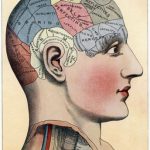 The cold winter season is strongly associated with the occurrence of seasonal affective disorder, or a mood disorder characterized by depression that occurs only during a specific season of the year. Although most of the reported cases of this mental health disorder happen in the winter, other individuals experience this depression during other seasons, such as every spring or fall each year. This psychiatric disorder is currently recognized as a common condition; however, the incidence in each state in the United States varies, depending on the length or presence of the winter season.
The cold winter season is strongly associated with the occurrence of seasonal affective disorder, or a mood disorder characterized by depression that occurs only during a specific season of the year. Although most of the reported cases of this mental health disorder happen in the winter, other individuals experience this depression during other seasons, such as every spring or fall each year. This psychiatric disorder is currently recognized as a common condition; however, the incidence in each state in the United States varies, depending on the length or presence of the winter season.
Seasonal Affective Disorder as a Mental Health Condition
In order to better understand the mental health condition of seasonal affective disorder, it is best to enumerate the symptoms of this psychiatric disorder. The disorder generally presents with the common symptoms classified under depression, although these only occur on a seasonal basis. For example, people with winter depression find it hard to get up in the morning, or often feel sick in the morning, possibly due to the later appearance of sunlight during this season. This psychiatric disorder is also associated with overeating and oversleeping, thus affecting the quality and performance at work or at school. Other symptoms of winter depression include difficulty in concentrating at work or school and an overwhelming feeling of inability to help one’s self.
Advertisement
RELATED READING: 4 surprising ways to treat your cold this season
According to a recent medical report published in the journal Public Library of Science ONE (PLoS ONE), light therapy may be recommended for people suffering from winter depression. The report explained that due to the shorter daylight hours during the winter, people tend to react to this seasonal change, often resulting in a mental health condition such as seasonal affective disorder.
The report presented findings on the effectiveness of light therapy as a substitute for the shortened length of day during the winter. Some psychiatrists often suggest light therapy to patients with seasonal psychiatric disorder, instead of prescribing anti-depressants for treatment. Their choice in using light therapy is mainly based on the length of depression being experienced by the patient, which in this case, only lasts for a season and thus, it is safer to recommend a treatment regimen that can easily be terminated at the end of the season, when their depression also subsides.
Depression and Mental Health
Interestingly, the report also showed that the chances of seasonal affective disorder to recur the next year after light therapy is comparable to those individuals with the same mental health condition that were treated with anti-depressants. Although this finding may somehow be taken as a poor treatment outcome for the disorder, the report also found that other treatment regimens might help prevent the recurrence of seasonal affective disorder among patients who underwent light therapy.
The results of the research study showed that light therapy, coupled with social support, could be more effective in treating seasonal affective disorder, as compared with simple light therapy alone. Follow-up studies on approximately 40 patients with the winter disorder and received light therapy disclosed that through increased interactions with their family and friends, the risk of recurrence of seasonal affective disorder decreased. For most of the study participants in the study, light therapy was not required in the next winter season and that social support from loved ones was effective enough against combating this seasonal form of depression.
The Depression Research Report
This research report presents findings that may be helpful to psychiatrists and the general public, to better understand seasonal affective disorder, as well as its symptoms and possible treatments. The shortened length of daylight hours during the winter serves as a main causative factor for this mood disorder, yet there are several ways that can correct this condition, including the use of light therapy and social support. Seeking the advise of a physician on the best treatment may help in improving the general well being of an individual as he or she goes through the winter season.
